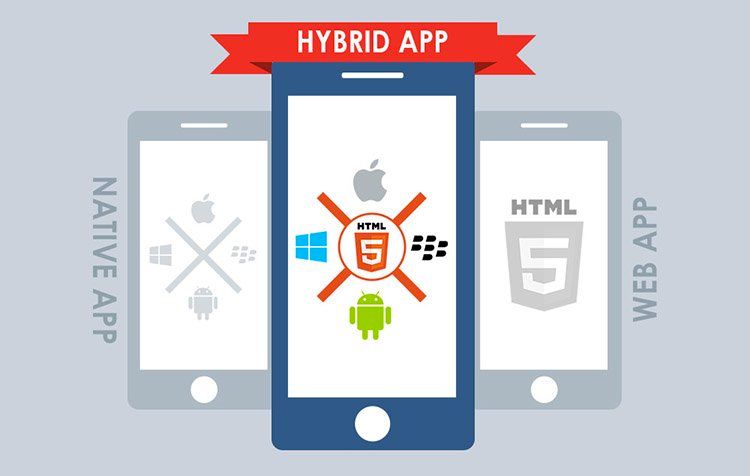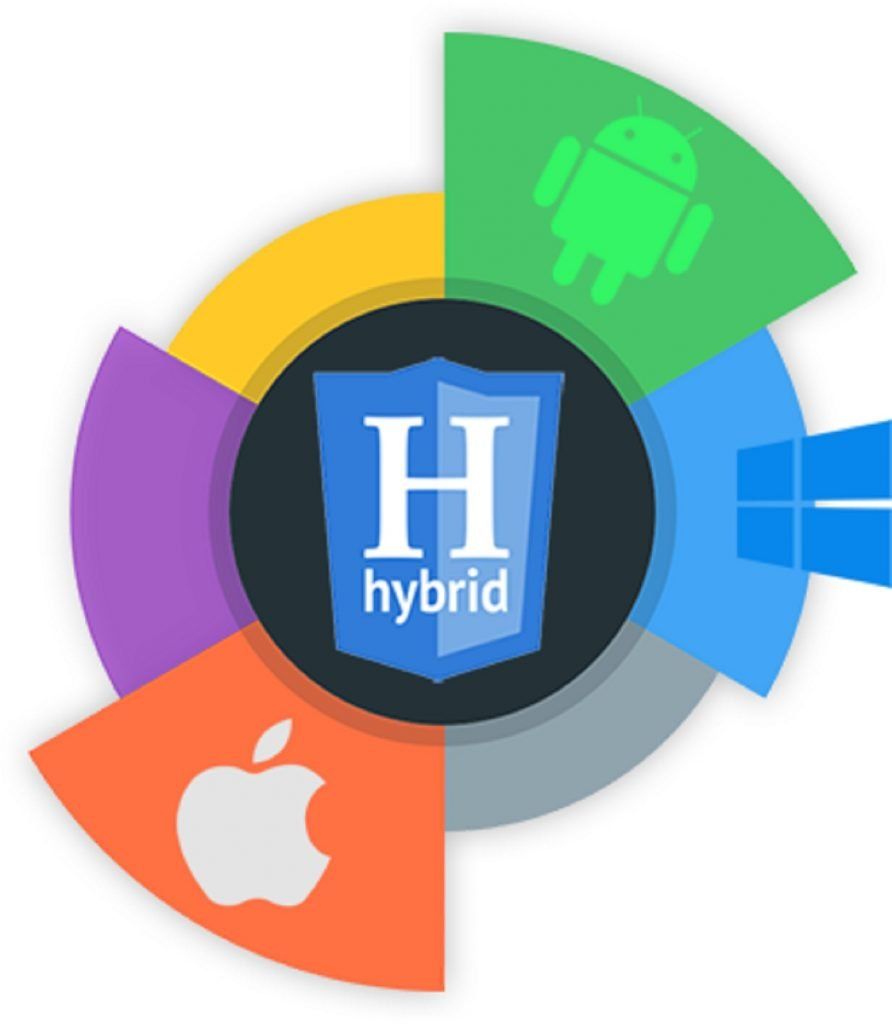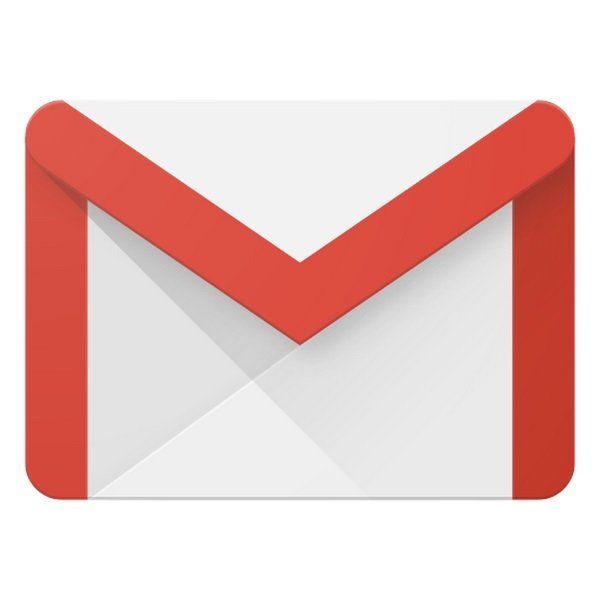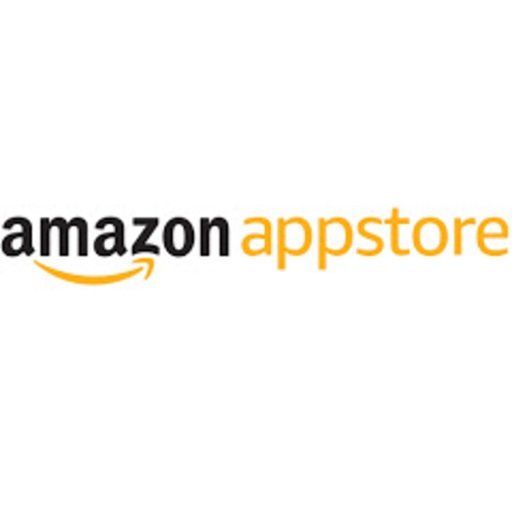Land Your Dream Job
AI-Powered Resume Builder
Create an ATS-friendly resume in minutes. Free forever!
8 min to read
Hybrid apps are somewhat like a web app that has been put in the shell of a native app. Apps developed using Apache Cordova, Xamarin, React Native, Sencha Touch, and other similar technologies fall into this category.
Hybrid apps use a single code base that works across many operating platforms. Therefore, it becomes easier and faster to develop these apps.
Apps are generally downloaded from application distribution platforms that are operated by the owner of the mobile operating system, such as the App Store (iOS) or Google Play Store.
When it comes to mobile apps, we have three types in it-
While native apps are built specifically for a platform and web-based apps are made to be accessed through the internet, Hybrid apps are a mix of both technologies. Hence, it has the best of both worlds, i.e.- Native and Web apps.

In this post, we are going to discuss Hybrid apps, their advantages, and the companies which predominantly use them.
Hybrid apps are apps that are installed on a device, similar to your usual app. What makes the hybrid apps different from the other 2 types is that they possess elements from native apps, applications made for a specific platform like iOS and Android, elements from web apps, and websites that act like apps but don’t need to be installed on a device and can be accessed on the internet via a browser.
Hybrid apps are usually written in HTML, CSS, and Javascript, just like Web apps. Their code is run within a container. The web browser on the device is used to render HTML, JavaScript, and native APIs to gain access to the device’s hardware.
Although a hybrid app will share the same navigation elements as a web app, whether it can run online or offline depends on its functionalities. If an application does not need support from a database, then it can be made to function offline.
Wish to gain in-depth knowledge of Android App development? Check out our detailed tutorial-https://codersera.com/blog/how-to-begin-learning-android-app-development/ and gather more insights!

Advantages of using hybrid apps are-
Now that we have discussed what are Hybrid apps and their advantages, let us look at the major companies that are using them as their primary application.

Instagram (sometimes abbreviated as IG) is an American photo and video-sharing social networking service owned by Facebook, Inc. The app allows users to upload media, which can be edited with filters and organized with tags and location information. Posts can be shared publicly or with pre-approved followers.
By adopting the hybrid approach, the developers have been able to make an app that supports both offline data and rich media. The best example of this is the signature short videos feature.
The app lets the user access the media even when they are offline or at least displays an error message.
As of October 2015, over 40 billion photos had been uploaded. Although praised for its influence, Instagram has been the subject of criticism, most notably for policy and interface changes, allegations of censorship, and illegal or improper content uploaded by users.

Evernote is an app designed for note-taking, organizing, task management, and archiving. The app allows users to create notes, which can be text, drawings, photographs, or saved web content.
Notes are stored in notebooks and can be tagged, annotated, edited, searched, given attachments, and exported.
The app is mostly known for its seamless performance and pleasant design, which makes it stand out from other apps in this segment. It is free to use with monthly usage limits and offers paid plans for expanded or lifted limits.

Gmail is a free email service developed by Google. Users can access Gmail on the web and using third-party programs that synchronize email content through POP or IMAP protocols.
It is one of the most common email-sending applications across the world, with more than 1.5 billion users.
Earlier Gmail was powered by HTML, which limited its usability. After adopting the mobile strategy, Google has combined both HTML and native elements successfully into the application to make it more meaningful with a seamless performance.
Using the hybrid app has greatly improved its performance and reduced the loading times.

Uber Technologies, Inc., commonly known as Uber, is an American multinational ride-hailing company offering services that include peer-to-peer ride sharing, ride service hailing, food delivery (Uber Eats), and a micro-mobility system with electric bikes and scooters.
As of 2019, Uber was estimated to have over 110 million worldwide users. In the United States, Uber had a 67% market share for ride-sharing in early 2019 and a 24% market share for food delivery in 2018. It has a revenue of $14.15 billion and 22,263 employees worldwide.
Since adopting the hybrid platform for its app, the navigation has become simpler and the user interface has become elegant when compared to its competitors.

Twitter is an American microblogging and social networking service on which users post and interact with messages known as “tweets”. Registered users can post, like, and retweet tweets, but unregistered users can only read them.
Users access Twitter through its website interface, through Short Message Service (SMS) or its mobile-device application software (“app”).
It has a net revenue of $3.46 billion with a net income of $1.47 billion and nearly 4600 employees worldwide.
Since Twitter is a popular social media platform, it receives a huge load of traffic every now and then. To tackle this, they switched to a hybrid app and ever since then, it hasn’t encountered any performance issues.
Seeing this performance boost on Twitter, many businesses have begun to opt for a hybrid approach.

Baskin-Robbins is an American chain of ice cream and cake specialty shop restaurants. Its parent company is Dunkin’ Brands. It claims to be the world’s largest chain of ice cream specialty stores, with more than 8,000 locations, including nearly 2,500 shops in the United States and over 5,000 in other countries. It sells ice cream in nearly 50 countries.
Baskin-Robins also use a hybrid framework for its app. The application uses HTML 5 to provide the best offline access to users with a similar UI on various platforms. In this way, it has combined both native and hybrid features in its app, which is quite impressive.

The Amazon Appstore for Android is an app store for the Android operating system operated by Amazon.com. It is available on the Kindle Fire tablet. The tablet, designed for media consumption in the Amazon ecosystem, relies solely on the Amazon Appstore for its marketplace, eschewing Google Play.
The app is powered by HTML 5 and provides a great experience to users accessing it. Its top-notch user interface makes it unique among users and also makes the app highly engaging.
The apps provided in Amazon Appstore are guaranteed to be of good quality and most of the apps you would find paid on Google Play store or Apple Store are available for free here.
Mobile apps have become very common with a large number of mobile users. Mobile apps provide easy access to things that would otherwise have to interact physically. Hybrid apps are those apps that have great performance and provide hassle-free browsing and don’t require a lot of maintenance.
When compared with Native and Web apps, it provides the best features of both and is easier to access. It is capable of handling a good amount of traffic without crashing and has a good market reach and takes lesser time to develop.
Do you have any questions about Hybrid apps? Ask in the comment section below to get the correct information from our in-house top app developers. And follow the link below to hire top app developers from Codersera!
Ans- Hybrid apps are essentially web apps that have been put in a native app shell. Once they are downloaded from an app store and installed locally, the shell is able to connect to whatever capabilities the mobile platform provides through a browser that's embedded in the app.
Ans- In short, native apps are exactly that, native to the user's OS and hence built per those guidelines. Hybrid applications are, at the core, websites packaged into a native wrapper.
Need expert guidance? Connect with a top Codersera professional today!